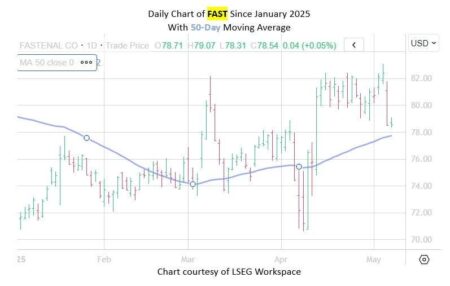Sirius XM Holdings stock (NASDAQ: SIRI) has decreased by 7% year-to-date, mirroring the broader market decline, as the S&P 500 also fell by 7%. The company announced Q1 earnings per share of $0.59, indicating a 6% year-over-year (y-o-y) reduction and falling short of analyst predictions of $0.67. Revenue for the quarter amounted to $2.07 billion, a decline of 4% y-o-y and slightly beneath the anticipated $2.08 billion. SiriusXM is still undergoing a strategic transition, concentrating on cost efficiency and digital audio expansion amidst ongoing subscriber losses. The company has achieved significant milestones in its cost-cutting initiatives, with total operating expenses reduced by 4% y-o-y. The most pronounced cuts occurred in Sales & Marketing (down 19%) and Product & Technology (down 15%), indicating a strong focus on operational efficiency. On the subscriber side, self-pay subscriptions decreased by 1% y-o-y to roughly 31.34 million, although this decline reflects a 16% improvement compared to the first quarter of 2024. However, paid promotional subscribers and paid accounts in Canada decreased by a total of 439,000.
SIRI stock appears unappealing – rendering it a poor choice to purchase at its current value of around $21. We believe there are several issues with SIRI stock, which makes it comparatively unappealing, despite its current valuation seeming very low.
Our conclusion stems from comparing the current valuation of SIRI stock with its operating performance in recent years, along with its present and historical financial status. Our assessment of Sirius based on key metrics of Growth, Profitability, Financial Stability, and Downturn Resilience indicates that the company has a very weak operating performance and financial status, as elaborated below. However, if you are looking for upside with less volatility than individual stocks, Trefis High-Quality portfolio offers an alternative – having outperformed the S&P 500 and generated returns surpassing 91% since its inception.
How does Sirius XM’s valuation look vs. the S&P 500?
When you consider what you pay per dollar of sales or profit, SIRI stock appears inexpensive in comparison to the broader market.
• Sirius XM possesses a price-to-sales (P/S) ratio of 0.9 while the S&P 500 stands at 2.8
• Furthermore, the company’s price-to-free cash flow (P/FCF) ratio is 4.3 compared to 17.6 for the S&P 500
How have Sirius XM’s revenues changed over recent years?
Sirius XM’s Revenues have experienced a decline over recent years.
• Sirius XM’s top line has remained stagnant over the last 3 years (in contrast to a 6.2% increase for the S&P 500)
• Its revenues have decreased by 2.8% from $9.0 Bil to $8.7 Bil in the last 12 months (versus a growth of 5.3% for the S&P 500)
• Additionally, its quarterly revenues dropped 4.4% to $2.1 Bil in the most recent quarter, the same as $2.1 Bil a year prior (in contrast to a 4.9% improvement for the S&P 500)
How profitable is SIRI?
Sirius XM’s profit margins are inferior to most companies in the Trefis coverage universe.
• Sirius XM’s Operating Income over the last four quarters was $1.9 Bil, resulting in a moderate Operating Margin of 22.3% (compared to 13.1% for the S&P 500)
• Sirius XM’s Operating Cash Flow (OCF) during this period was $1.7 Bil, indicating a moderate OCF Margin of 20.0% (versus 15.7% for the S&P 500)
• For the last four-quarter period, Sirius XM’s Net Income was $-1.7 Bil – signifying a very poor Net Income Margin of -19.1% (comparatively 11.3% for the S&P 500)
Does Sirius XM appear financially stable?
Sirius XM’s balance sheet seems extremely weak.
• Sirius XM’s Debt figure stood at $10 Bil at the end of the latest quarter, while its market capitalization is $7.0 Bil (as of 5/2/2025). This results in a very poor Debt-to-Equity Ratio of 140.0% (compared to 21.5% for the S&P 500). [Note: A lower Debt-to-Equity Ratio is preferable]
• Cash (including cash equivalents) constitutes $162 Mil of the $28 Bil in Total Assets for Sirius XM. This generates a very poor Cash-to-Assets Ratio of 0.6% (compared to 15.0% for the S&P 500)
How resilient is SIRI stock during an economic downturn?
SIRI stock has performed worse than the benchmark S&P 500 index during some of the recent downturns. While investors hope for a soft landing of the U.S. economy, how severe could the situation become if another recession occurs? Our dashboard How Low Can Stocks Go During A Market Crash illustrates how key stocks have performed during and following the last six market crashes.
Inflation Shock (2022)
• SIRI stock declined 49.6% from a peak of $67.80 on 12 August 2022 to $34.20 on 9 May 2023, compared to a peak-to-trough drop of 25.4% for the S&P 500
• The stock fully recovered to its pre-Crisis peak by 20 July 2023
• Since that time, the stock has risen to a peak of $78.10 on 20 July 2023 and is currently trading at approximately $20
Covid Pandemic (2020)
• SIRI stock decreased 39.5% from a high of $73.40 on 20 February 2020 to $44.40 on 20 March 2020, relative to a peak-to-trough decrease of 33.9% for the S&P 500
• The stock fully recovered to its pre-Crisis peak by 20 July 2023
Global Financial Crisis (2008)
• SIRI stock dropped 98.7% from a peak of $41.50 on 16 January 2007 to $0.55 on 11 February 2009, compared to a peak-to-trough drop of 56.8% for the S&P 500
• The stock fully recovered to its pre-Crisis peak by 4 November 2015
Putting all the pieces together: What it means for SIRI stock
To summarize, Sirius XM’s performance across the parameters discussed above is as follows:
• Growth: Weak
• Profitability: Weak
• Financial Stability: Extremely Weak
• Downturn Resilience: Very Weak
• Overall: Very Weak
Considering the factors above and keeping in mind the company’s very low valuation, we believe that the stock is unappealing, reinforcing our stance that SIRI is a poor stock to buy.
While it would be wise to steer clear of SIRI stock for the time being, you might want to look into the Trefis Reinforced Value (RV) Portfolio, which has surpassed its all-cap stocks benchmark (combining the S&P 500, S&P mid-cap, and Russell 2000 benchmark indices) to yield strong returns for investors. What is the reason? The quarterly rebalanced mix of large-, mid-, and small-cap RV Portfolio stocks provides a responsive approach to optimize the benefits of positive market conditions while mitigating losses during market downturns, as detailed in RV Portfolio performance metrics.
Read the full article here
















